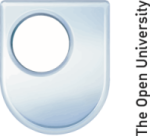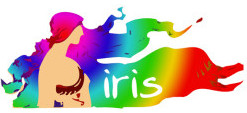On organising the Hestia2 seminar in Southampton
As the organiser of the Hestia2 seminar in Southampton I could write about our initial struggle to find a good format, my fight with the university to book a seminar room in a completely booked out campus, discussions with our financial support staff to figure out a balanced budget, the technical flaws with our livestream feed, and of course the many very human feelings like “no-one will turn up!?!” and “what shirt should I wear?”. But none of that would be very interesting to read, and all of these concerns are now firmly pushed to the back of my mind and replaced by the feeling that this seminar was a success!
It will not come as a surprise that the organiser thinks his own event was a success. So let me at least try to come up with some objective-sounding arguments why this was in fact the case.
Multi-disciplinarity: organising a multi-disciplinary event is always risky. You need to address a very diverse target audience and convince them that the topics covered and the discussions will be of interest. People with different backgrounds also tend to talk in different languages: physicists will talk “maths”, classicists will talk “Greek/Roman”, archaeologists will talk “stuff”. The Hestia2 seminar was such a multi-disciplinary event. It was attended by classicists, historians, archaeologists, physicists and designers from the academic, commercial and governmental sectors. Despite this diversity the discussions very often converged into common interests. These included how large datasets like those held by the Ordnance Survey and the Historic Environment Records (HERs) could be usefully combined using new technologies, or how uncertainty about data can be formally expressed and visualised. Finding such common grounds was very much thanks to the chairs of our session. For example, Max Schich confronted the multi-disciplinary background of our audience directly when he asked to what extent individuals need to have skills and knowledge traditionally associated with different disciplines and professions to allow them to apply linked data and network techniques critically and usefully. This question drew very diverse reactions from the audience. Some felt that our educational system should allow for complete diversity and customisations of skills and knowledge, others (and I am part of this particular camp) believe that collaboration is the key, that field specialists should remain specialists but be able to collaborate with specialists in other fields by having some very basic understanding of the other’s “language”, approaches and questions.
Exploration: Hestia2 is not about showing off a great piece of work our team did a few years ago. It’s about learning from different projects’, institutions’ and individuals’ experiences with using innovative technologies to understanding conceptions of space. It’s about exploring the potential of such techniques for providing innovative insights into old datasets, or for allowing us to ask new questions of our data. The Southampton seminar definitely had that exploratory vibe. Very different techniques and projects were presented. The first three talks very much set the scene by giving an overview of different approaches. Max Schich introduced us to networks, Alex Godden provided an insight into the issues surrounding the aggregation and management of historical/archaeological data, and John Goodwin showed how the Ordnance Survey (OS) is implementing linked data. The discussions that followed showed a genuine interest in innovative approaches but also a constant concern with getting at the fundamental issues that keep all this innovation together. For example, in our discussion we never restricted ourselves to asking how something could be done, but always focused on why we should do it in the first place. The question of why HER data could not be seamlessly linked with OS data, for example, was not because of technological restrictions but concerns about protecting cultural heritage and also commercial concerns. Once such concerns were addressed we turned our attention to how combining such diverse datasets could allow us to ask new research questions, or could lead to a better management of historical resources.
Weather: it has sunny and hot. That makes every event an instant success!
I am very much looking forward to the second Hestia2 seminar in Stanford, where I will be able to put my feet up a little and enjoy another round of stimulating multi-disciplinary exploration.
Image shows John Goodwin of Ordnance Survey in action. More pictures, plus the recording of the seminar and all presentations will be available soon.







